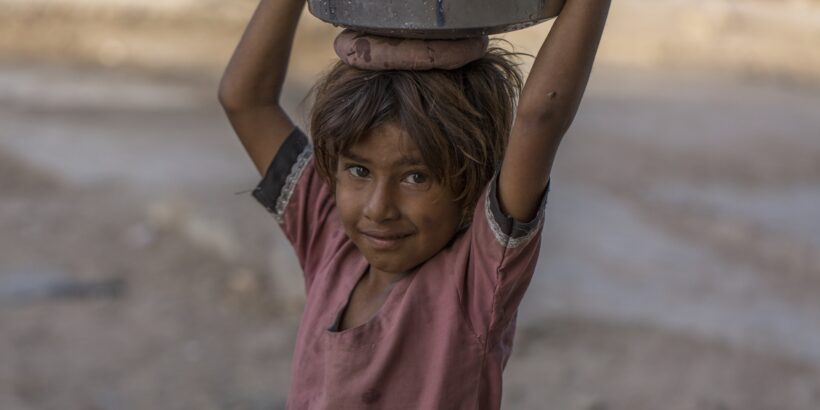Climate change leads to severe and prolonged weather events, which adversely affect access to safe water and sanitation infrastructure. As a result, communities can face an elevated risk of typhoid. To prevent typhoid spread, it is essential to invest in water, sanitation, and hygiene (WASH) improvements and typhoid conjugate vaccine (TCV) introduction.
Extreme weather events like cyclones, floods, droughts, and heatwaves can contribute to the spread of waterborne diseases such as typhoid. On this World Environment Day, we explore how climate change heightens the risk of typhoid.
Heatwaves and droughts
Across the Mediterranean to East Asia, millions of people are currently experiencing heatwaves caused by climate change. Additionally, Asia and parts of Africa are suffering from the impact of El Niño, a global climatic phenomenon that typically leads to warm and dry conditions. Heatwaves can increase the number of typhoid cases because people often consume unsafe water which is more likely to contain typhoid bacteria.
Prolonged dry seasons often lead to droughts, compelling people to search for water wherever it is available. The shallow water sources on which they are often forced to rely during droughts are more likely to contain harmful bacteria, including typhoid. Recent droughts across large portions of southern Africa have led to water shortages and an increased risk of waterborne disease.
Cyclones and floods
Climate change is responsible for warming the Earth’s atmosphere, which can lead to more rainfall and weakens tropical atmospheric circulation during the dry season, slowing down the speed of tropical cyclones over land. As a result, when cyclones make landfall, they tend to remain in one place for longer periods of time. Additionally, climate change causes an increase in atmospheric water vapor. The cyclonic winds carry heavier clouds, leading to more intense rainfall over a longer period. In a changed climate, we may experience fewer storms, but they are much more severe. This has been evident in recent cyclones like Cyclone Freddy in Malawi and Cyclone Remal in Bangladesh, both of which caused heavy rainfall and damaged critical water treatment and health care infrastructure and homes.
These heavy rains cause flooding, which can overwhelm water and sanitation systems. As a result, water supplies can become contaminated with human waste, leading to an increased risk of typhoid transmission. The increased rainfall from a warming climate in general, or cyclones in particular, creates a favorable environment for typhoid to spread. In addition, flooding and cyclones cause additional damage to homes, roads, and other infrastructure, which further worsens the vulnerability of communities. These communities may already struggle with inadequate health facilities, making it difficult for them to respond effectively to emergencies like typhoid outbreaks. These events can also displace communities to temporary shelters that may be overcrowded with limited WASH facilities, conditions that are favorable for typhoid.
What are the preventive measures?
While we can’t immediately control climate change, we can protect communities against typhoid. TCVs are available now and provide protection against typhoid, especially during extreme weather events. We don’t know when climate disasters will strike. When they do, TCV ensures communities are protected. Investing in safe WASH facilities can significantly reduce the risk of typhoid so that the infrastructure and systems can withstand severe conditions. The combination of TCVs and WASH interventions together is the best approach to prevent and control typhoid.
Cover Photo: A child carries a bucket of water in Pakistan. Credit: Asim Hafeez/TyVAC.



